Politics
7 Photographers on What It’s Like to Be on the Ground Capturing the Black Lives Matter Protests Across the US, From Boston to Oakland
Photographers have played a crucial role in activist movements throughout history.
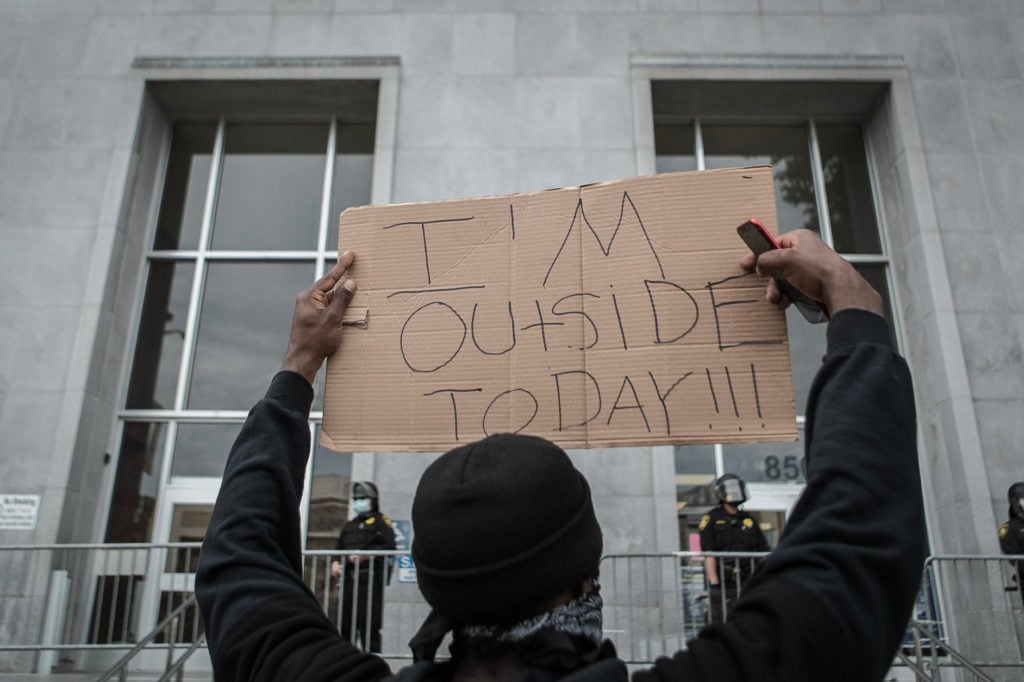
Photographers have played a crucial role in activist movements throughout history.

Taylor Dafoe

For every modern protest that changed the world, there were photographers on the ground capturing history as it unfolded. Today, as demonstrations play out on the streets of nearly every major global city, the two acts are often one in the same: to photograph the protest is to participate in it.
We spoke with seven photographers who have all trained their lenses on the Black Lives Matter protests in the US, from New York to Oakland. Below, they’ve shared their experiences about what it’s like working in the crush of a protest, and what this moment means to them.
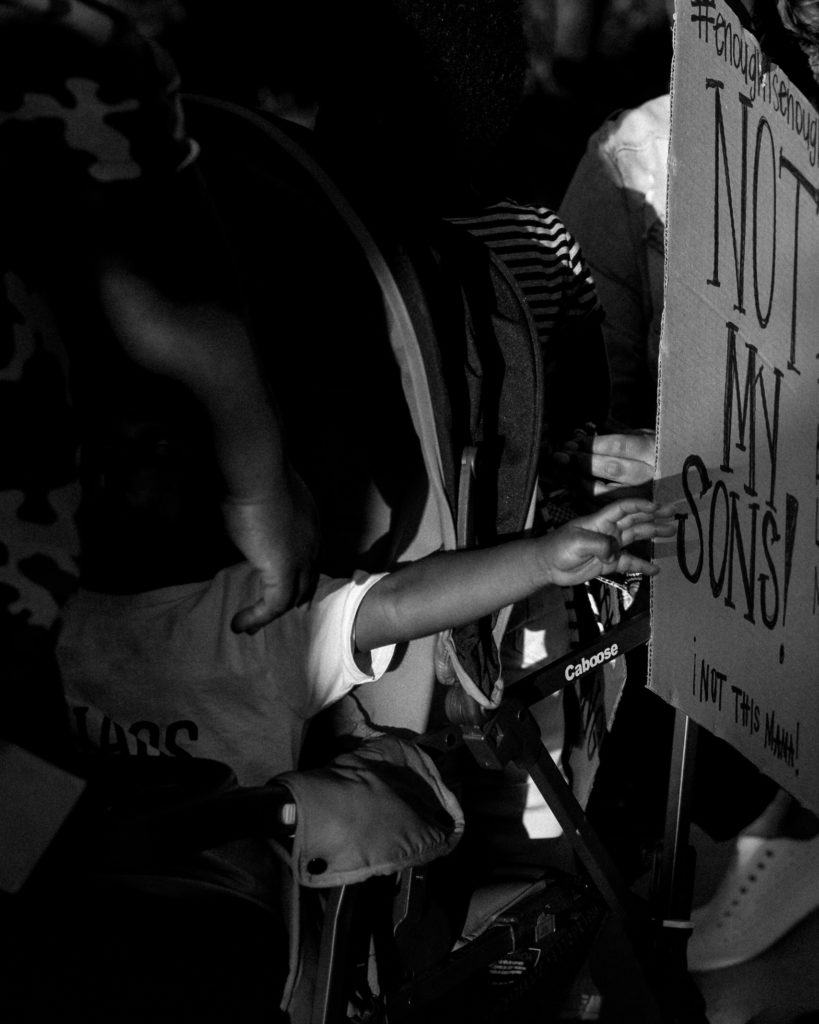
Photo: Zerb Mellish. © Zerb Mellish 2020. (@obzerb)
When I got to the protest, there were so many people of different ethnicities, religions, and beliefs. The crowd was huge, so much bigger than I could’ve imagined. Getting there, I immediately felt the energy. People wanting and praying for change—praying that this is the last life taken.
Before even picking up my camera, I paused to take it all in. Before all of this, the only protests I knew of were simply not of this scale. The images I’ve seen in the past were not this diverse. I began to gravitate toward groups where the emotions were literally spilling over—hearing their stories, capturing their images, and making sure I catch them in the best light possible.
I spoke with a mother who had lost her son to police brutality and was protesting with her younger son in a stroller. The younger son was reaching for one of their protest signs, not quite understanding what he was reaching for, and the mother was pulling the sign back. The sign said “Not my sons.” This is what broke me down. At that moment, I knew that everything is at stake right now. The very fabric of what makes us human is at stake.

Photo: Vanessa Charlot. © Vanessa Charlot 2020. (@vanessa.charlot)
This protest sheds light on the pain and rage that communities of color across the country are experiencing. For many, black people have been diminished to threatening objects and symbols. For me, it’s about documenting the beautiful complexities of black and brown life, and presenting stories that often go unheard and are free of the white gaze. I hope my photographs humanize black and brown people in ways that our country does not. These portraits force you to look into their eyes, see their expressions and find ways to relate to them—essentially closing the gap between “me vs. them” and embracing a more diverse, equitable, and inclusive “us.” As an artist, it is important that my work challenges us this way—to recognize that we all are complex, imperfect, and beautiful. This moment in American history has been a moment of reckoning for us all, not just black people. As a photographer, a mom, and a black woman living in America, I am determined to capture images that make black resilience and resistance more visible, not in comparison to, but in spite of pervasive inequities, biased representations, and systemic challenges.

Photo: Sterling L. Gilmore. © Camera Nerdy Shoot 2020. (@iamnerdyshoot)
In Chicago, it was personally a very overwhelming experience to participate in the protests while capturing photos from a couple of powerful moments. I was elated to join the protest alongside my mentor and founder of the CHAMPS Male Mentoring Program, Vondale Singleton, because we’ve witnessed ill oppression and injustice toward African American people.
I had the opportunity to capture peaceful protesters, marching down my own old neighborhood on Martin Luther King Drive in our black metropolis, where many raves came together in solidarity. On Thursday morning, there was a rally where Father Michael Pfleger, a priest from St. Sabina Church, was giving a moving message to the community. He mentioned that what we all are facing in the black community is too much. I agree and feel like the road ahead will be to fight for justice and to change mindsets.
One of the quotes I live by every day is from our CHAMPS CREED: “Every setback is a setup for greatness. Every failure is a ladder towards greatness. Every goal is applied towards my greatness. Every life experience enhances my greatness. Every task perfects my greatness. The divine guides my greatness. I am greatness in the making.”
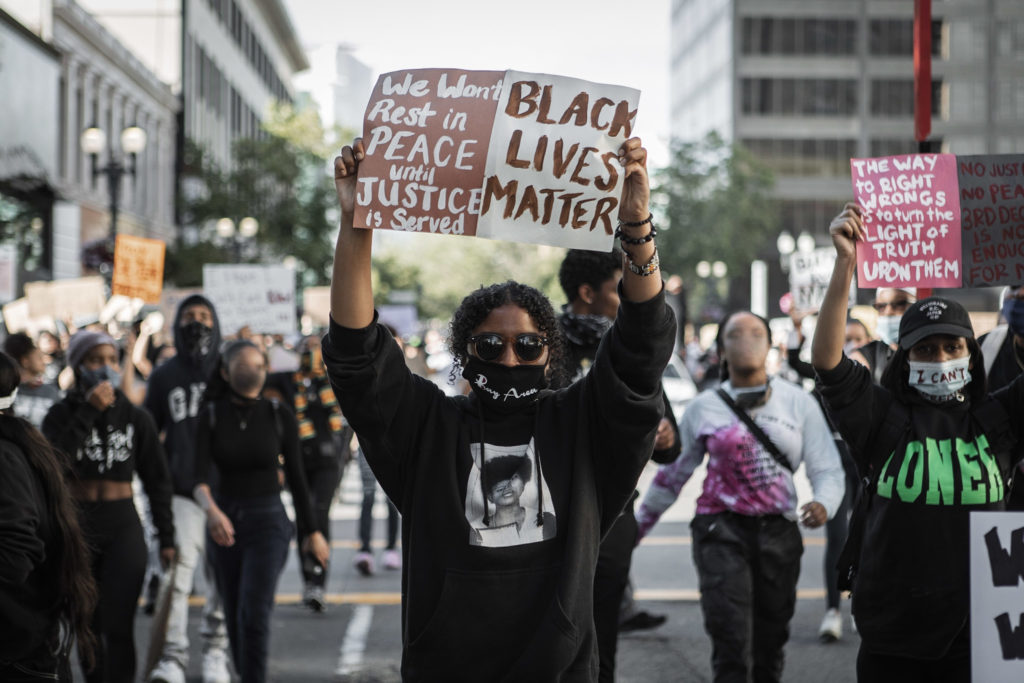
Photo: Amir Aziz. © Amir Aziz 2020. (@amirxaziz)
The scene in the Bay Area, particularly Oakland, is well known for its social justice movements and organizations. However, I’m seeing two sides to this. On one side, I’m seeing the grassroots organizing by black and brown communities moving toward ending oppression for all that our city is rooted in. On the other side, I’m seeing an outcry in response to everything going on: housing inequality, white guilt, COVID-19, Trump, anarchy, anything. Protests have been happening daily since May 31 in a variety of forms. Many are anonymously organized and have led to destruction in the city from people who come from out of town. It can be a mess.
However, I’ve been able to capture the spirit of this time by knowing the land. Many of the routes have been used in the past for groundbreaking demonstrations, so each photograph has an underlying spirit connected to the location. Being born and raised here, knowing the history and landmarks where the movements in the past have taken place has allowed me to know this spirit intimately.
I’m big on capturing protest signs. I believe protest signs are some of the best visual communicators for expressing how people feel during this time using art. Especially since faces aren’t as available since we’re still in a pandemic and masks are the norm. I’ve been making it a point to document what the signs say and the creativity that goes into them. I’m also specifically making a point to photograph black people. While we have a great number of white and other non-black allies in the protests, it would be a disservice to this movement fighting for black lives to overlook the very black people fighting for our humanity. Oakland has seen a significant decrease in the number of black residents over the years and it’s even worse in San Francisco with less than 6 percent of the total city population. So, it’s also about showing how the black community in the Bay Area is still here and not just surviving but thriving.
A photographed moment that stood out to me was during a protest march to San Francisco’s Hall of Justice: a protester’s sign simply read “I’m outside today!!!” While that can be interpreted in many ways, I thought of it as a matter of fact that simply being outside right now can be a form of protest.
It resonated with me because some days I don’t want to go outside. I don’t want to continue to put myself at risk. It’s easy to forget that we’re still in a global pandemic. Everything going on has been taking a toll on physical and mental health. It has been difficult to document objectively while also living the experience subjectively. So sometimes just showing up is enough.
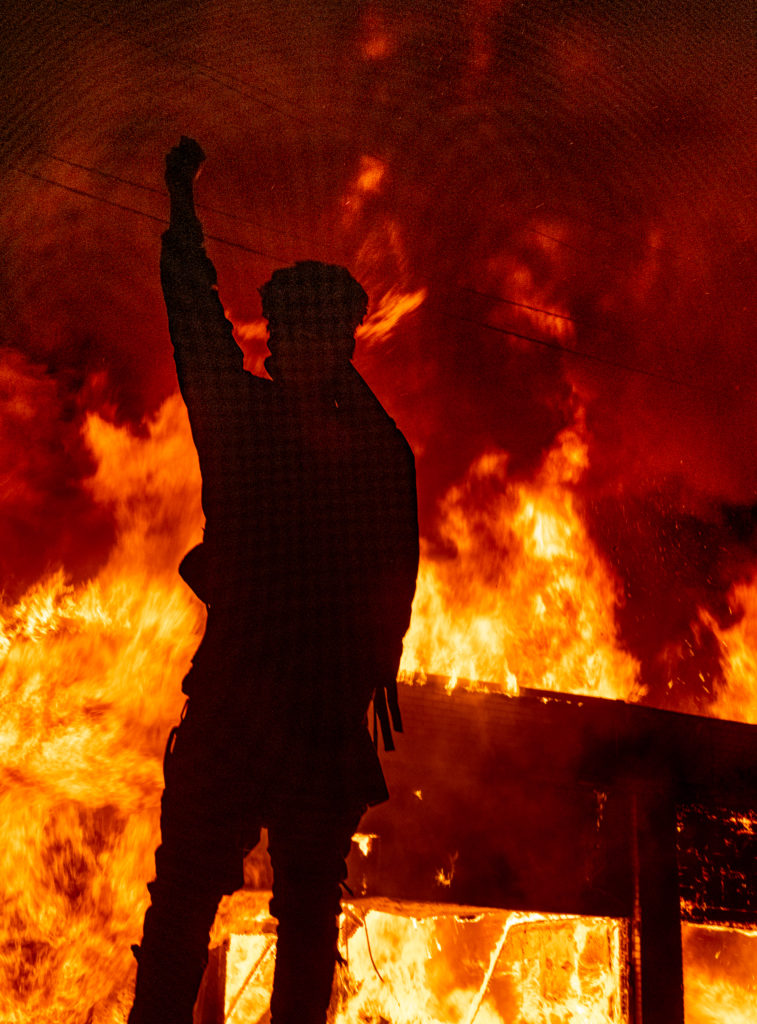
Photo: Joshua Rashaad McFadden. © Joshua Rashaad McFadden 2020. (@joshua_rashaad)
Although I’m not a resident of the city, I did arrive here in Minneapolis roughly a week ago to capture these crucial moments. The scene, quite frankly, brought to mind images one would see during times of war: the tear gas, the fires, the shooting of rubber bullets, the emotions that ran high as police barged through crowds of protesters pleading for—demanding—justice. It was a saddening sign of the times when even peaceful protestors are met with suited force and violence. Since George Floyd’s memorial service on Thursday the streets have calmed a bit, but buildings, and surely the community members, are left scorched and scarred (in a sense). Protests and marches have continued.
I wanted to capture everything I possibly could, and I placed myself in many locations—in the middle of streets teeming with police and projectiles, or alongside burning structures and passionate protesters. I also made portraits of people from this community. I documented their stories because I felt a responsibility to this hurting community to convey the truth to the rest of the world of what is and is not happening here. They deserve that. I am upset that we as a nation and black community continue to experience this level of degradation and modern-day lynchings that, most times, go unrectified. Blacks, for centuries, have proven themselves to be a strong and resilient people. There are so many powerful moments that I have witnessed it’s really hard to choose one.
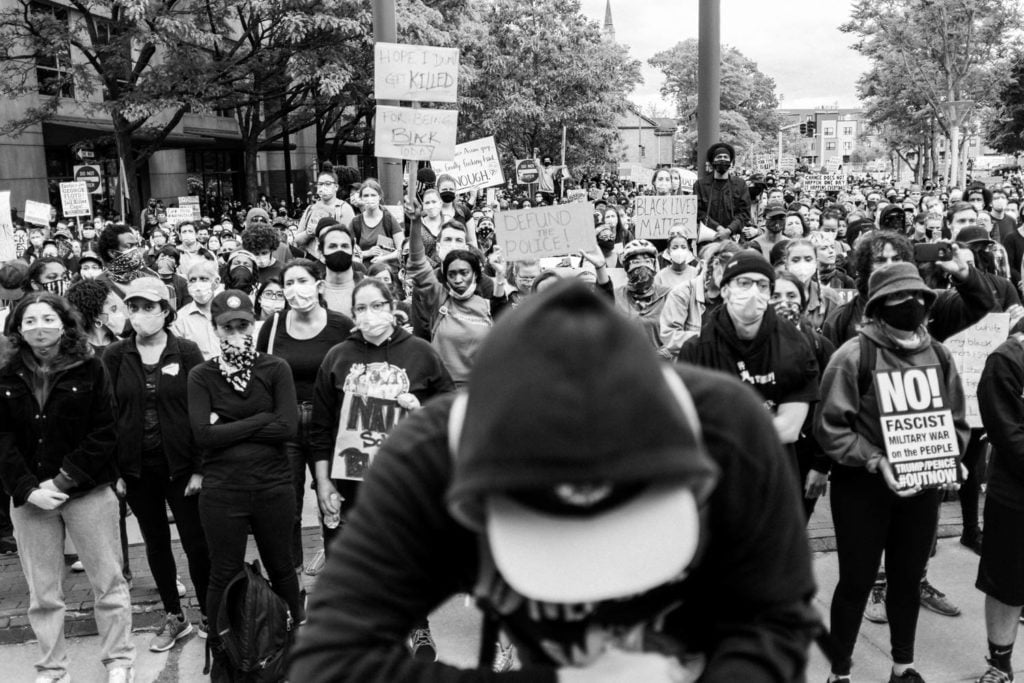
Photo: Harry Scales. © Harry Scales 2020. (@harryscales_)
https://www.instagram.com/p/CA73TAQlGKl/?utm_source=ig_web_button_share_sheet
I am located in Brooklyn, New York, but have been covering protests all over the city. Many of the protests that I have covered have had a powerful energy. I’ve seen people of diverse backgrounds come together in a way I have never experienced before. When I’m at a protest I am constantly vigilant. I plan an escape route, I scan around me, and I look for people in the crowd who are displaying emotion and energy. It is through them that I’m usually able to tell the most captivating and accurate story. I aim to capture everything as accurately as possible. At the same time, I have covered a lot of protests; like any other event, they have their own rituals. Most things rarely happen only once. In those cases, if I miss a shot of something particularly striking, I know I can capture it again at a later time. Of course there are things that happen in this situation that are of a blink-and-you’ll-miss-it kind. In those situations, my constant vigilance helps me capture the moment.
On Sunday, May 31, I was covering the protest in Brooklyn and as people started marching over the bridge toward Manhattan I found myself, relatively speaking, near the front of the crowd, which extended far behind me. And yet, ahead of me I could see hundreds of people standing together for what they believe is right. I was astounded and awestruck by the sheer size of the crowd.